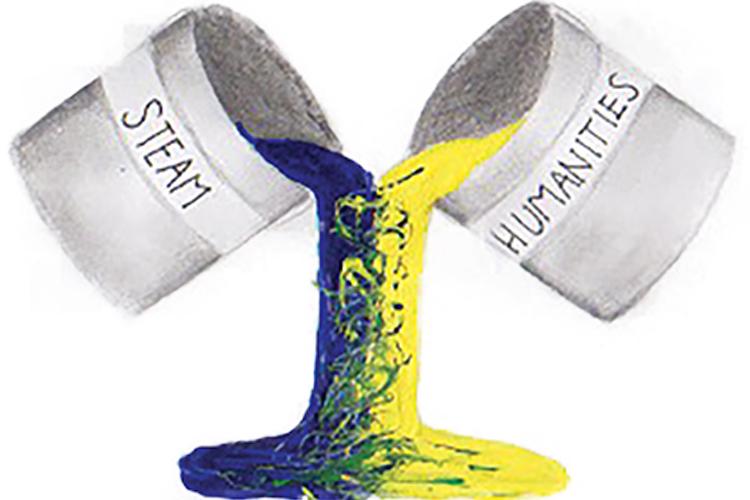Following the 1957 launch of the Russian satellite Sputnik, the U.S. government began to fear falling behind technologically and scientifically to the advances of the rest of the world. Scientific, quantitative fields were thus emphasized in the years after the launch, continuing to the present day. In the 1990s, the National Science Foundation coined the acronym “STEM” in an effort to link the fields of science, technology, engineering and mathematics.
Recently, however, educators have made the transition from STEM to STEAM, adding “art” to the pre-existing acronym. This seemingly small change is the root of newfound controversy surrounding the STEAM movement.
With the creation of STEAM came a disconnect in understanding of what the “A” entails. Some STEAM educators might argue that the idea of “arts” includes the language arts and social studies, while others believe that the controversial letter solely entails the fine arts. Educators in the English and history fields do not feel that they are included in the movement even when working with science teachers who argue for the inclusion of the humanities in STEAM.
Because science, technology, engineering and mathematics are all quantitative, objective fields, STEM seems to be a natural integration of subject matters. These practices traditionally go together. The addition of the creative, subjective realm of the arts threw a curveball into the trend.
And the idea of STEAM creates a slippery slope: once one qualitative or non-objective subject matter is added to STEM, where do you stop?
Providing proof of this slippery slope, the idea of adding the humanities to STEAM, making the acronym SHTEAM, has sprung up as a solution to the ambiguity of the subject matters addressed in STEAM. You might be wondering: aren’t those all the subjects covered in schools? It is that thought that makes me believe that the STEAM acronym is not necessary.
Don’t get me wrong; I fully support the idea and practice behind STEAM. STEAM promotes interdisciplinary learning and the integration of all subjects, which is vital to a good education. There is no one profession that only requires one or two subject matters; doctors have to write reports, archaeologists must know history and artists need
Emphasizing this idea, in 1987, Mount Sinai’s medical school in New York City implemented the HuMed, or Humanities in Medicine, program. This program recruits high-ranking students from liberal arts schools across the country and admits them into the pre-medical school for their sophomore year and beyond. These students stick to their former major, whether it be English, history, or some other form of the humanities, and take the necessary science courses in the summer. This program was created due to a concern that students that only focused on the sciences turned out to be mediocre doctors. Students need the idea and study of humanity to be successful and caring health care providers.
This program does incorporate all subjects, yet it is called HuMed, not STEAM or even SHTEAM. The program does not need a universal acronym to tell its purpose; its unique and telling name makes it clear that the system is an integration of all subjects.
The STEM acronym as well, in my opinion, while it served a vital purpose in the past in increasing the number of Americans trained in quantitative fields, is unnecessary. Any overt grouping or banding together of subject matters has the potential to make other subjects feel excluded, while the grouped subjects seem more valuable. Even without the arts included, STEM makes the sciences seem more important and useful, thus contradicting the idea of interdisciplinary, equal focus learning that lies behind STEAM.
The idea behind the acronyms is excellent, but the acronyms themselves hurt more than they help as they leave subjects not explicitly represented feeling left out.





